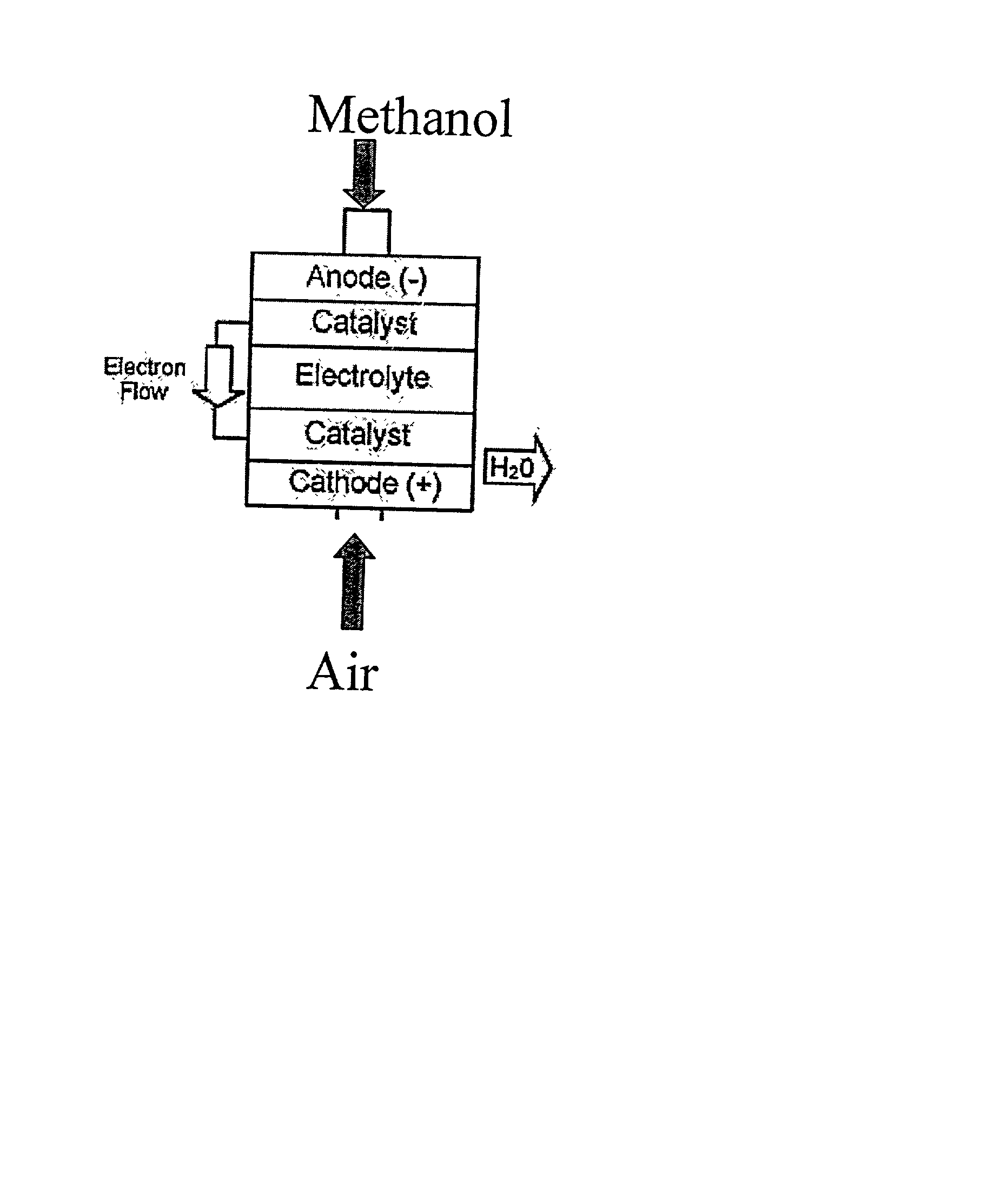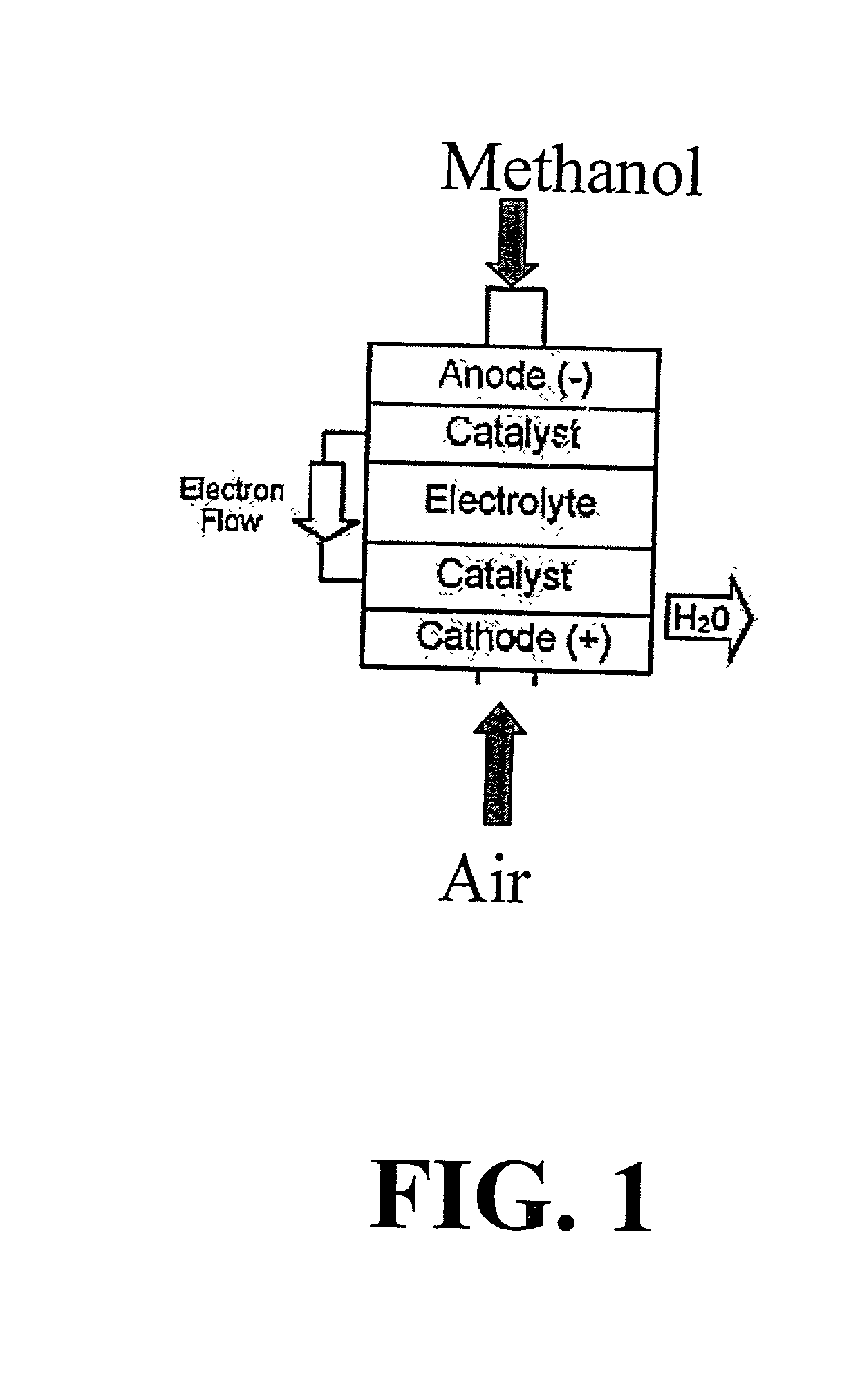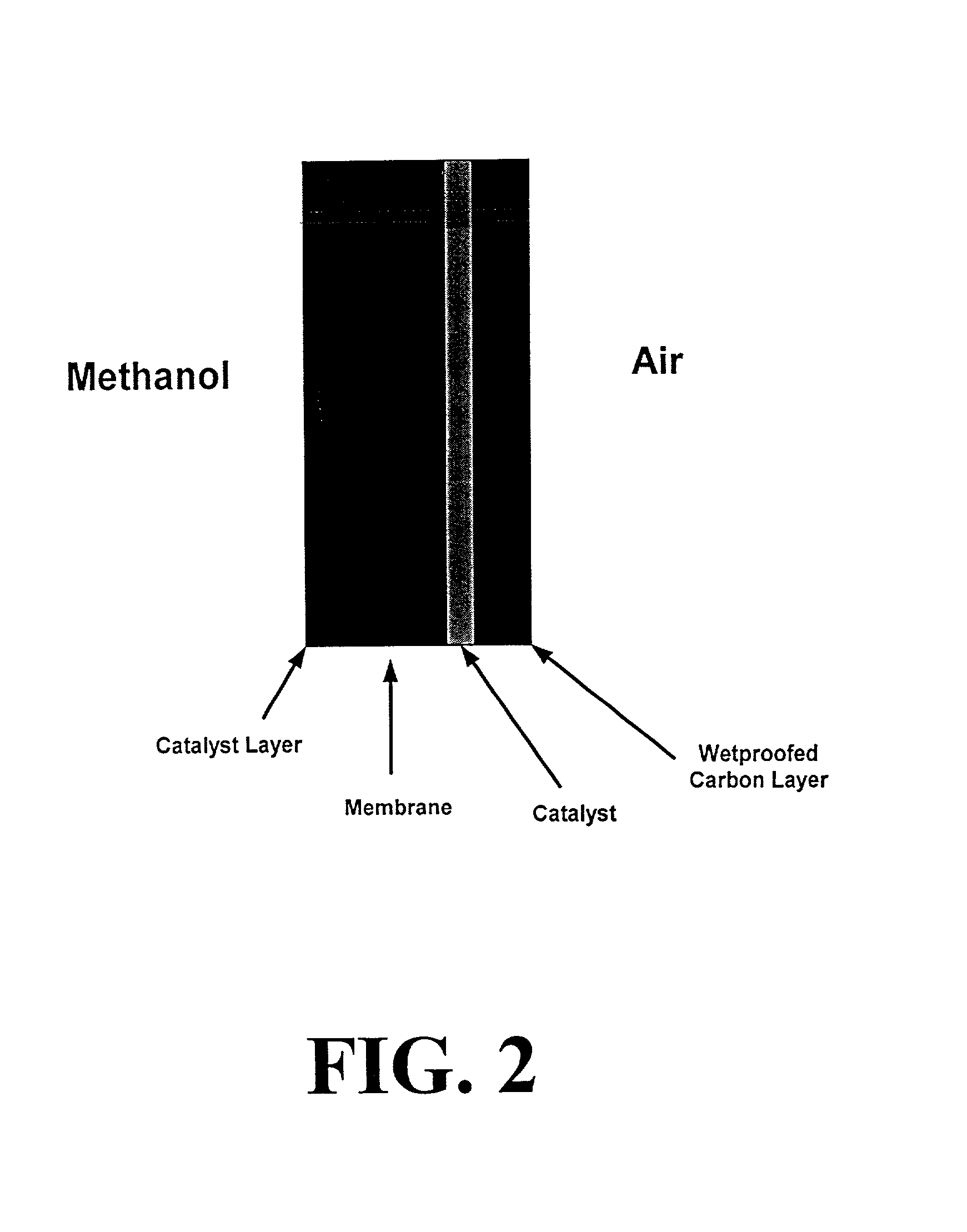Polymer composition
- Summary
- Abstract
- Description
- Claims
- Application Information
AI Technical Summary
Benefits of technology
Problems solved by technology
Method used
Image
Examples
example 1
[0054] Sulfonated polyetheretherketone (sPEEK) was synthesized by treating PEEK with chlorosulfonic acid as previously described. The sulfonated polyetheretherketone was dissolved in dimethylacetamide and polymer membrane was cast from solution. The membrane was dried from room temperature up to 120.degree. C., and finally under vacuum to remove the last traces of solvent.
[0055] The membrane was then transferred into a round bottom flask containing 95% wt / wt acrylonitrile 4% pentaerytritol triacrylate and 1% Lucirin TPO. The membrane was treated in reflux in the acrylonitrile solution for 4 hours. The acrylonitrile embedded in the polymer membrane was then polymerized by exposure to UV light.
example 2
[0056] 0.75 g of sulfonated PEEK (sPEEK) is dissolved in 21.1 g of dimethylacetamide (DMAC). 10 drops of ammonia are added to this solution. 0.05 g of polyacrylonitrile (PAN) is added (0.8 g of a 6.25% solution of PAN in DMAC). 0.20 g of polybenzimidazole are added (3.3 g of a 6% solution). The homogeneous solution is cast at room temperature into a 12.7 cm.times.12.7 cm mold. After drying at room temperature the polymer membranes is soaked in 0.5M sulfuric acid solution for 16 hours, then boiled in the same solution for 2 hours, and finally rinsed in deionized water.
[0057] The polymer membrane was swollen in boiling water (water uptake 66.7%). The polymer membrane conductivity was measured by AC impedance. The proton conductivity at 30.degree. C. was found to be 0.094 S / cm and at 60.degree. C. it was 0.125 S / cm.
example 3
[0058] This example discloses a membrane comprising 81.8% sPEEK, 9.1% PVI and 9.1% elastomeric copolymer acrylonitrile-vinylimidazole (30:1).
[0059] Sulfonated polyetheretherketone (sPEEK) (0.9 g) was dissolved in 15 g of dimethylacetamide (DMAC). To this solution, 30% ammonium hydroxide (1.6 g) was added. A solution of acrylonitrile-vinylimidazole copolymer (molar ratio 30:1) in DMAC was added (addition corresponds to 0.1 g of the copolymer), followed by an addition of polyvinylimidazole (PVI) (0.1 g). The mixture was stirred overnight. The resulting solution was cast onto a silanized glass frame (size 5".times.5"). The membrane was dried at room temperature for two days, then vacuum dried at 60.degree. C. for 8 hours. The resulting membrane was soaked in 1M H.sub.2SO.sub.4 at room temperature overnight. The membrane was then rinsed with deionized water to remove any traces of acid. The resulting, membrane was 4 mil thick. The room temperature membrane conductivity was 0.037 S / cm.
PUM
| Property | Measurement | Unit |
|---|---|---|
| Temperature | aaaaa | aaaaa |
| Temperature | aaaaa | aaaaa |
| Temperature | aaaaa | aaaaa |
Abstract
Description
Claims
Application Information
 Login to View More
Login to View More - R&D
- Intellectual Property
- Life Sciences
- Materials
- Tech Scout
- Unparalleled Data Quality
- Higher Quality Content
- 60% Fewer Hallucinations
Browse by: Latest US Patents, China's latest patents, Technical Efficacy Thesaurus, Application Domain, Technology Topic, Popular Technical Reports.
© 2025 PatSnap. All rights reserved.Legal|Privacy policy|Modern Slavery Act Transparency Statement|Sitemap|About US| Contact US: help@patsnap.com



